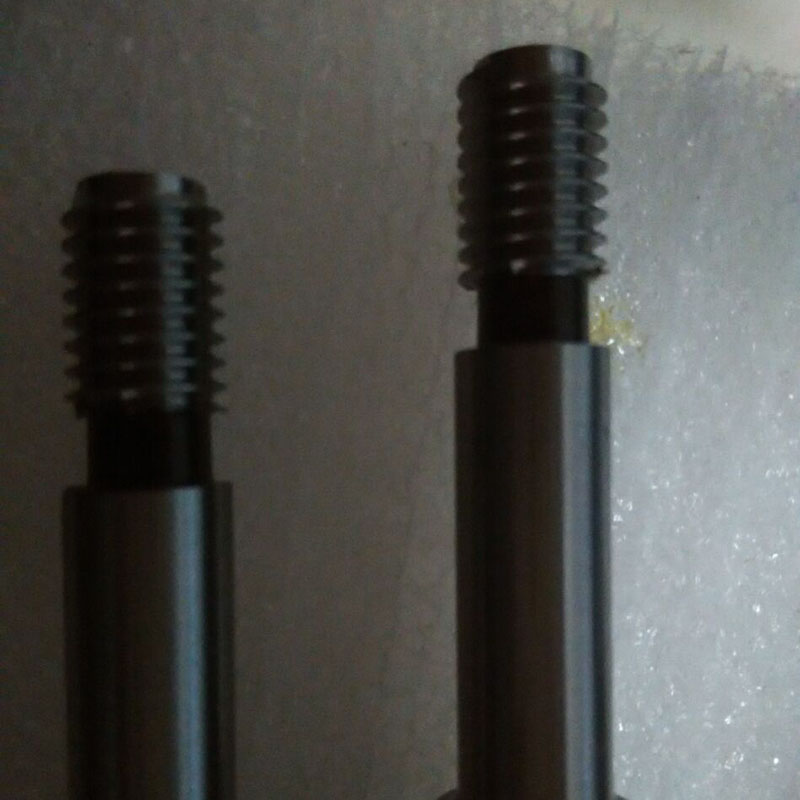ಡಿಸೆ . 04, 2024 16:18 Back to list
hydraulic cylinder check valve
Understanding Hydraulic Cylinder Check Valves A Comprehensive Overview
Hydraulic systems are integral to a variety of industrial applications, including construction, manufacturing, and automotive industries. At the heart of these systems are hydraulic cylinders, which convert hydraulic energy into mechanical work, enabling the movement of heavy loads. To ensure that hydraulic systems operate efficiently and safely, check valves play a crucial role. This article will explore hydraulic cylinder check valves, their functions, and their importance in hydraulic systems.
What is a Hydraulic Cylinder Check Valve?
A check valve, also known as a non-return valve, is a device that allows fluid to flow in one direction while preventing backflow. In hydraulic systems, check valves are essential components that ensure fluid flows correctly through the cylinder, maintaining pressure and efficiency. They can either be integrated into the hydraulic cylinder or installed in the piping of the hydraulic circuit.
Function of Check Valves in Hydraulic Systems
The primary function of a hydraulic cylinder check valve is to prevent the backward flow of fluid, which can disrupt the proper functioning of the hydraulic system. When the hydraulic pump is activated, fluid flows into the cylinder under pressure, allowing the hydraulic cylinder to extend or retract as required.
If there were no check valves in place, the fluid could flow back into the reservoir when the pump is turned off, leading to potential loss of pressure, erratic movement, and even system failure. Check valves ensure that once fluid enters the hydraulic cylinder, it remains there until it is intentionally released. This one-way flow mechanism is essential for holding hydraulic pressure and achieving precise control over cylinder movement.
Types of Hydraulic Cylinder Check Valves
There are several types of hydraulic check valves, each designed for specific applications and requirements. The most common types include
1. Ball Check Valves These valves use a spherical ball that sits in a seat. When fluid flows in the intended direction, the ball is pushed away from the seat, allowing flow. If the flow attempts to reverse, the ball is forced against the seat, sealing the valve.
2. Disc Check Valves These valves operate using a hinged disc that swings on a pivot. When fluid flows in the proper direction, the disc opens. If backflow occurs, the disc closes to prevent reverse flow.
hydraulic cylinder check valve

3. Spring-Loaded Check Valves These valves use a spring mechanism to hold the valve closed against backflow. They can be adjusted to open at a specific pressure, providing more control over flow rates.
Choosing the right type of check valve depends on various factors, including the pressure of the system, the characteristics of the fluid being used, and the specific application requirements.
Importance of Check Valves in Hydraulic Systems
Hydraulic cylinder check valves are vital for several reasons
1. Maintaining Pressure Check valves help retain the pressure within the hydraulic cylinder, which is crucial for effective performance. This allows for smoother operation and safer handling of heavy loads.
2. Preventing System Damage Backflow can cause hydraulic fluid to return to the reservoir, potentially leading to damage in the hydraulic lines and components. Check valves mitigate this risk, protecting the system and its components.
3. Enhancing System Efficiency By preventing backflow, check valves ensure that the hydraulic systems operate at optimal efficiency. This leads to improved performance and reduced energy consumption.
4. Safety In many applications, especially those involving heavy machinery, the risk of fluid backflow can pose safety hazards. Check valves help prevent accidents by ensuring that hydraulic fluid remains contained within the system.
Conclusion
Hydraulic cylinder check valves are essential components that greatly enhance the functionality and reliability of hydraulic systems. By allowing fluid to flow in only one direction, they maintain pressure, protect system integrity, improve efficiency, and promote safety. Understanding the different types and functions of check valves is crucial for anyone working with hydraulic systems, ensuring they can select and maintain the appropriate components for their specific applications. As industries continue to rely on hydraulic technology, the role of check valves will remain paramount in sustaining effective and safe operations.
-
Water Valve Gate Design Prevents Leakage and CorrosionNewsJul.11,2025
-
Steel Fab Table Features Reinforced Construction for LongevityNewsJul.11,2025
-
Specialized Valve Designs for High Pressure SystemsNewsJul.11,2025
-
Machinist Gauge Pins Feature Ground and Lapped FinishesNewsJul.11,2025
-
Hose Check Valve Prevents Backflow in Irrigation LinesNewsJul.11,2025
-
Durable Micrometer Tools Withstand Heavy Workshop UseNewsJul.11,2025
Related PRODUCTS









